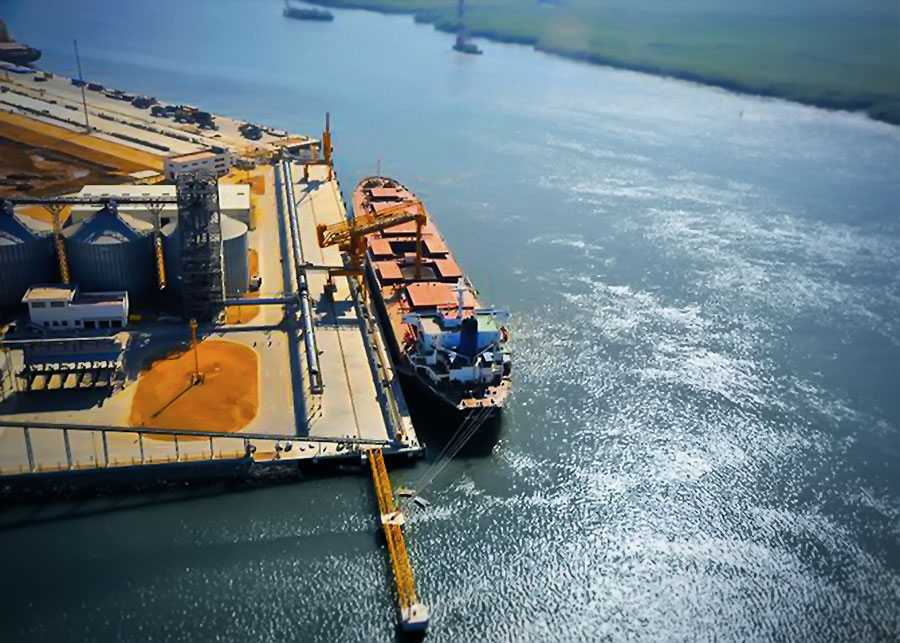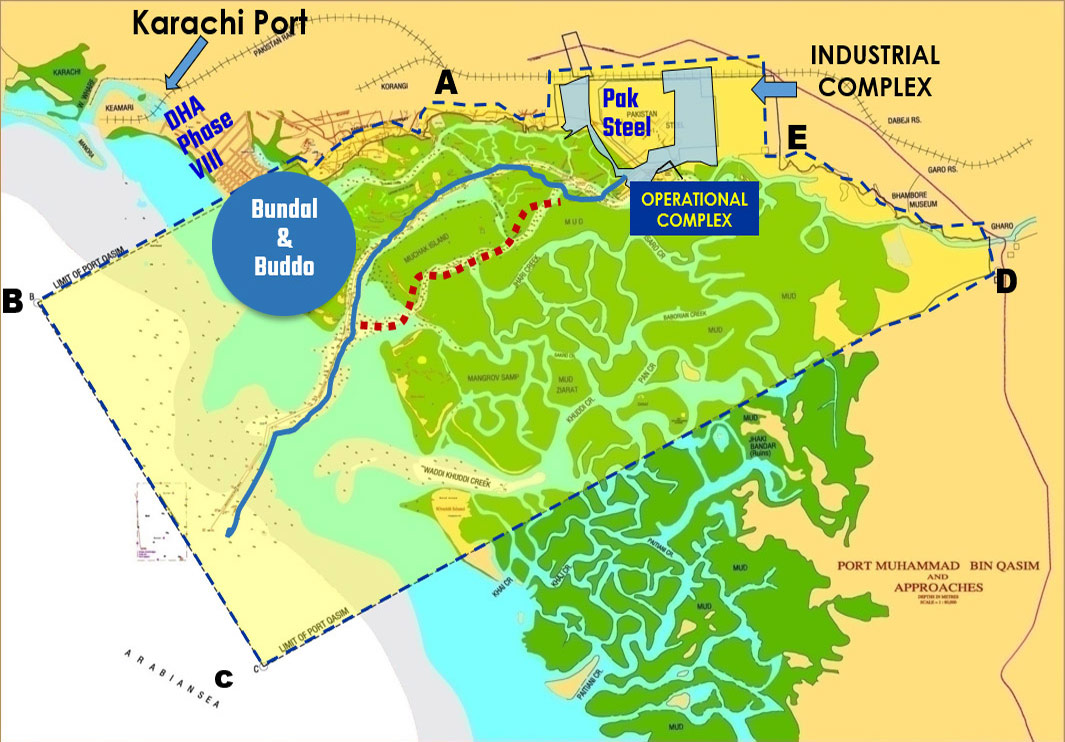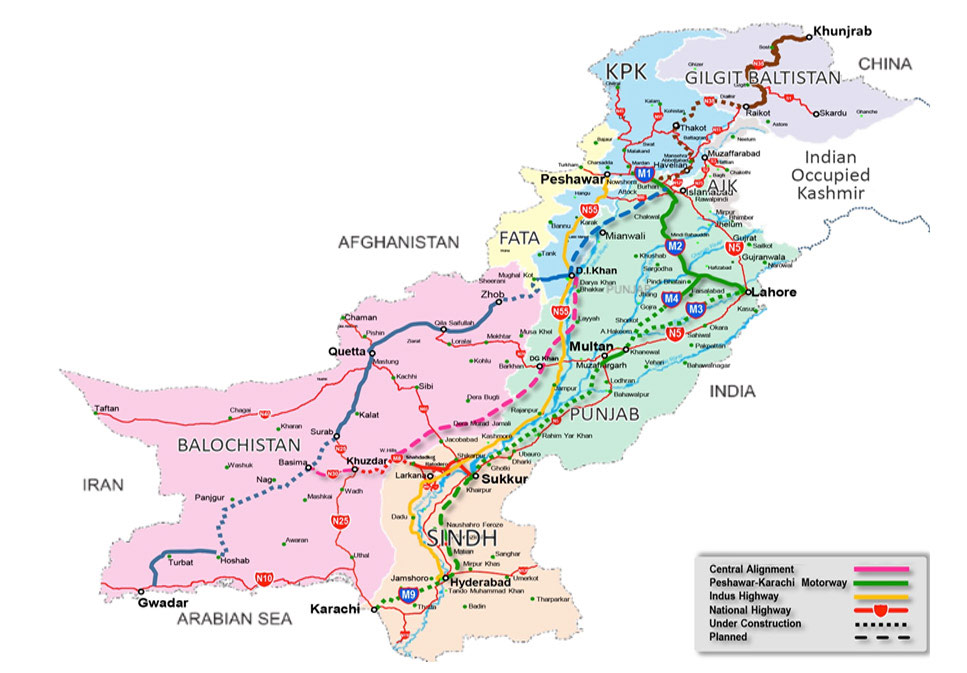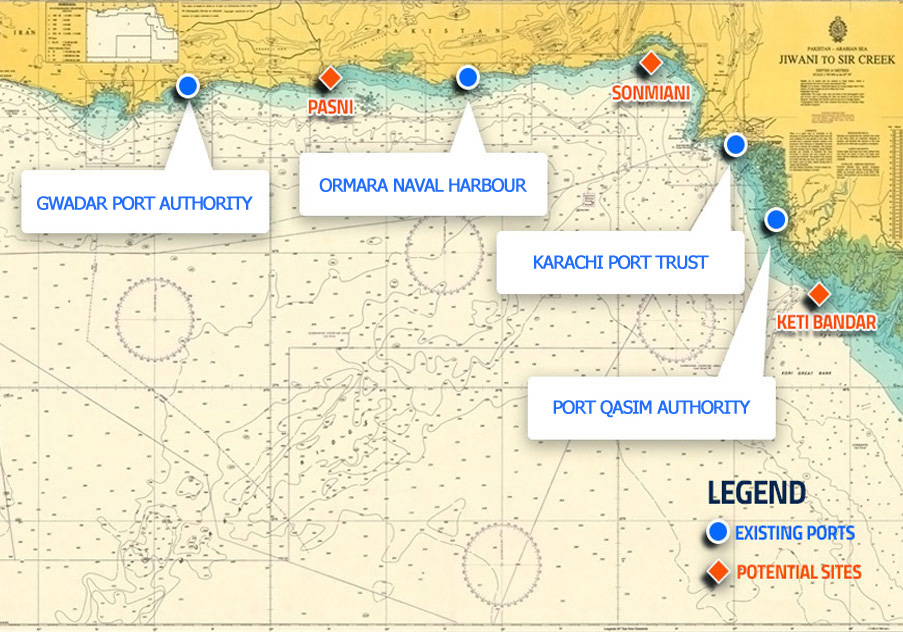Introduction
Background
Port Qasim was established through an Act of parliament on 29th June 1973. It is located in karachi's phitti creek of Indus delta region. The port started operation in 1980 with a dedicated Iron Ore Coal Berth for the bulk handling of imports of raw materials for Pakistan Steel Mill. The port presently has 18 berths (15 in private sector) with annual handling capacity of 89 millions tons. All commodities ranging from minerals oils, edible oil, coal, rice, wheat, cement to fertlizers, general cargo, containers and LNG are being handled in the port at state-of-the-art terminals. It is the energy hub and only LNG Port of Pakistan.
Port Qasim is well connected to hinterland through all modes of transportation. It connects directly to the national highway , motorway network leading to Afghanistan, CARs and the CPEC Routes. The Port is also connected to the National Railway network by a 14 kms Railway Line and dedicated railway station. Port operations run 24/7.
Port Qasim has largest industrial zone of Pakistan spread over 15474 acres. It has more than 400 industrial/commercial units in operation. Approx 3000 MW electricity is being generated in its industrial zones. Port Qasim is one of the largest contributotrs to national economy of Pakistan handling its 51% of sea trade and has an impressive growth rate of 5% in all facets of port operation. The port has paid more than Rs 8 billion in taxes in 2019-20 and duties collection from port terminals has been over Rs 800 billions.
Port Qasim has enormous potential for expansion . Two new LNG terminals, one container terminal and 02 multipurpose berths are in the pipeline. The plans for future include, deepening, widening of main navigational channel along with commissioning of alternate channel. Dualization of 26 km main access road, upgradation of existing industrial waste treatment plant and another combined effluent treatment plant are also in the planning stage.
Port Qasim is truly "Gateway to National Prosperity".

We Born 1973
PQA functions under PQA Act, 1973
GROWTH Industrial & Commercial Activities
PQA under landlord concept encourages industrial & commercial activities
PROGRESS Handling/Network
Large vessels having 13 meter draught and 347 meter LOA are handled.
Road & Railway Networks for upcountry transportation
HUB Navigational Channel
49 Km long Navigational Channel
Fast becoming the energy hub of Pakistan
Port Management
The Port is under the administrative control of Ministry of Maritime Affairs, Government of Pakistan. Chairman is the chief executive of the port. All policy decisions are vested in PQA Board comprising seven members headed by Chairman, PQA. The Board is blend of public and private sector participation.
Functions
PQA is primarily a service oriented organization. The port provides shore based facilities and services to international shipping lines and other concerned agencies in the form of adequate water depth in the channel, berths/terminals, cargo handling equipment, godowns, storage areas and providing facilities for safe day and night transit of vessels.
Port Locations & Accessibility
Day and night access to Port through a 49 km long channel marked by channel buoys up to 13 meter draught vessels.
Port Qasim Location
Notified Limits

Road Connectivity

Ports Of Pakistan

Approach
Day and night access to port through a 49 km long channel marked by channel buoys up to 13 meter draught vessels.
PQA has singular attraction both in port facilities and port-based industrial development. These advantages include:
- Close proximity to hinterland thus saving transport cost.
- First rate multi-modal connection with communication network.
- Time-efficient and cost-effective port services.
- Availability of basic utilities like portable water, power, gas, telecommunications, banking and other facilities.
- Immense possibility for expansion of port facilities to meet dynamic requirements of international shipping.
- Transshipment and transit trade facilities with Afghanistan and Central Asian Republics.
- Full range of port facilities to handle general, bagged, bulk, break-bulk, liquid and containerized cargo with back-up facilities.


